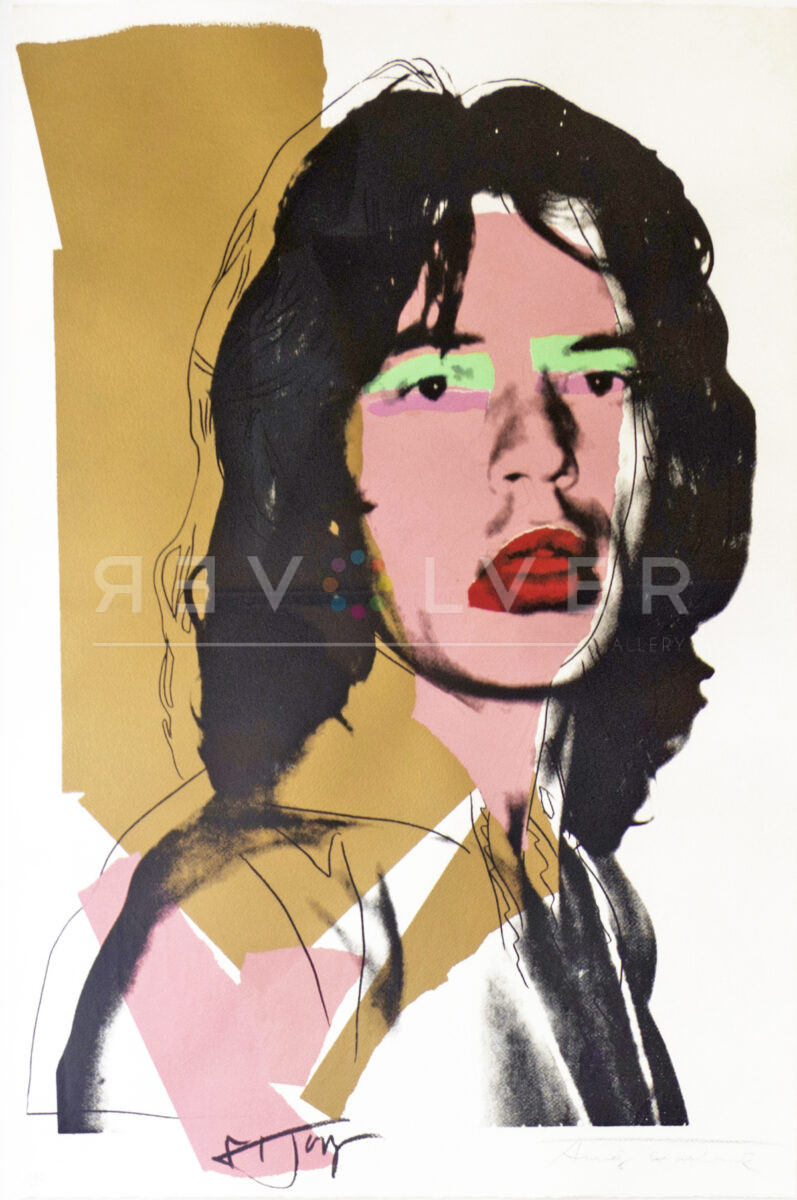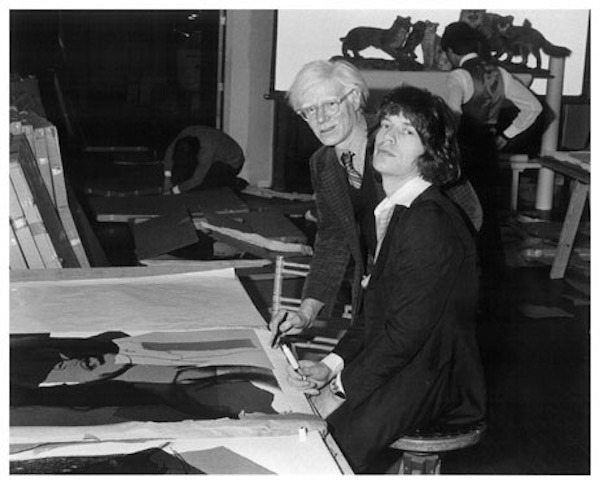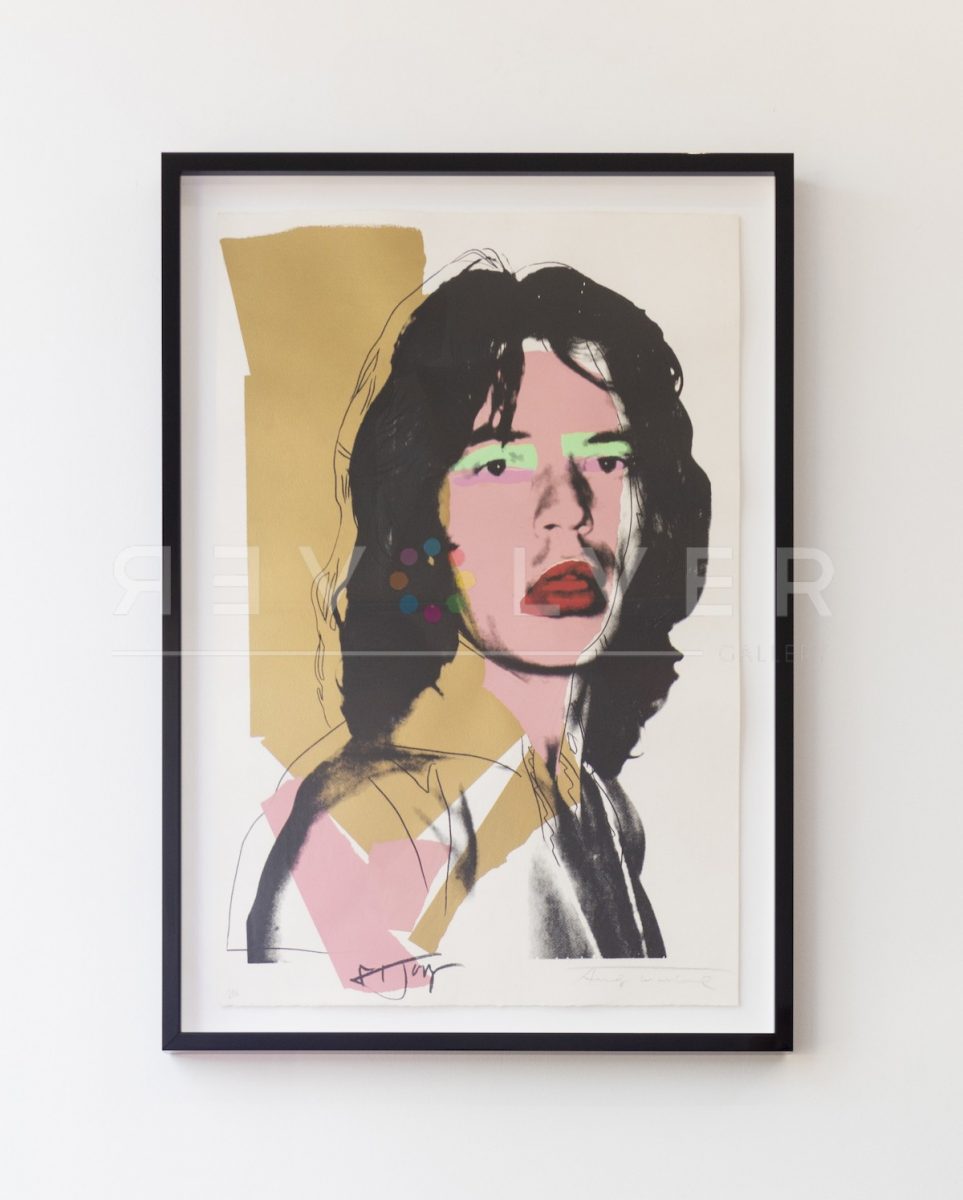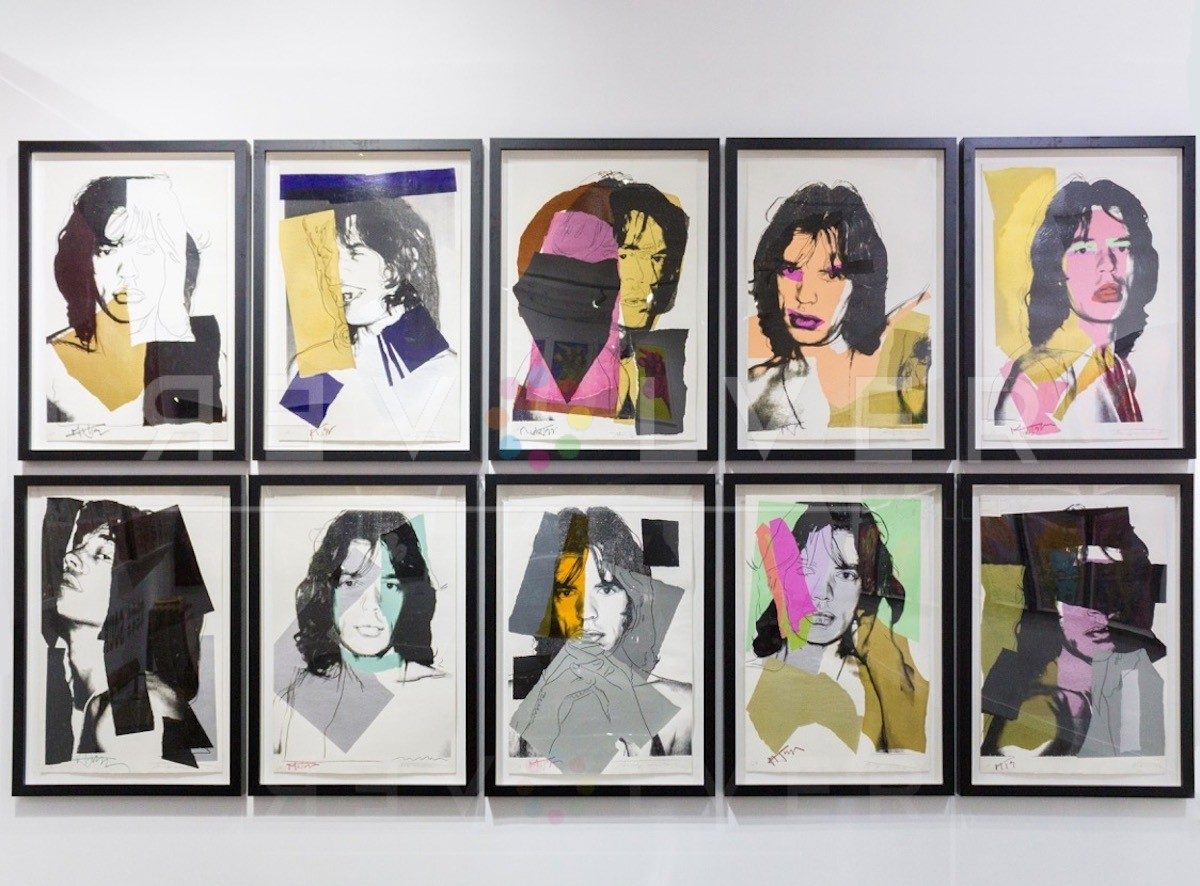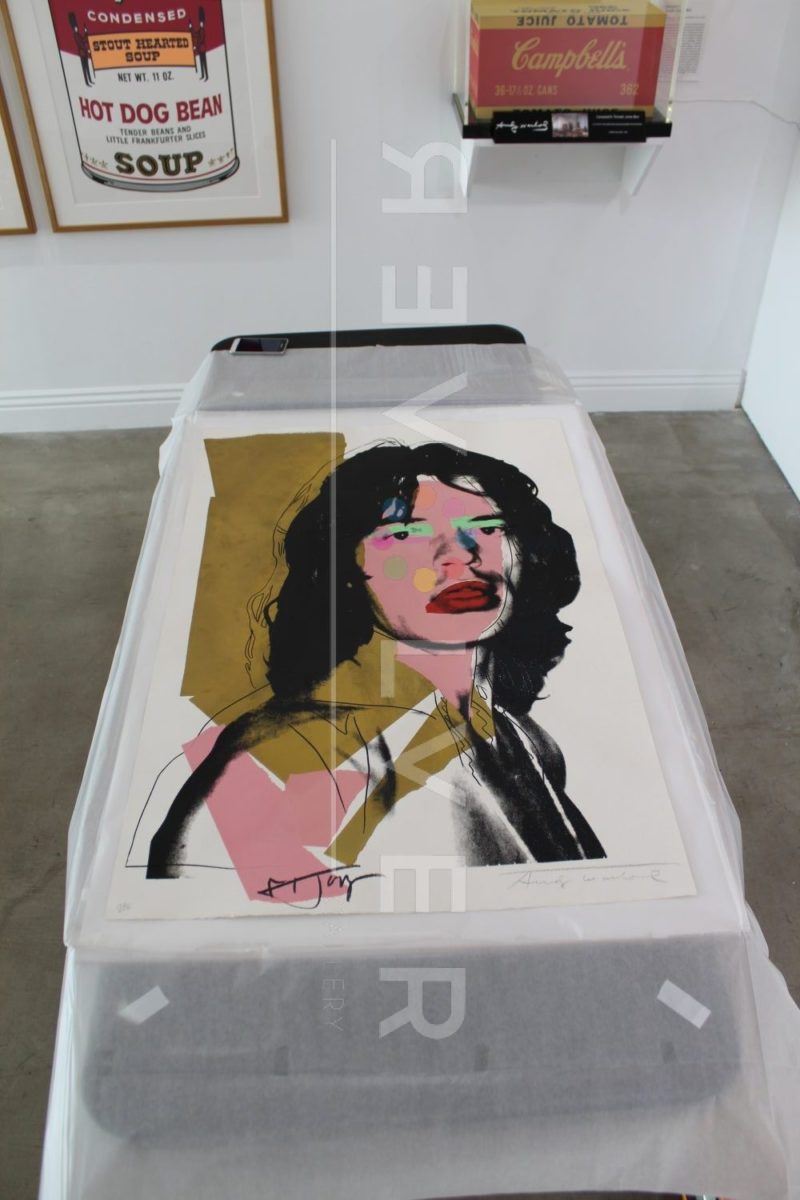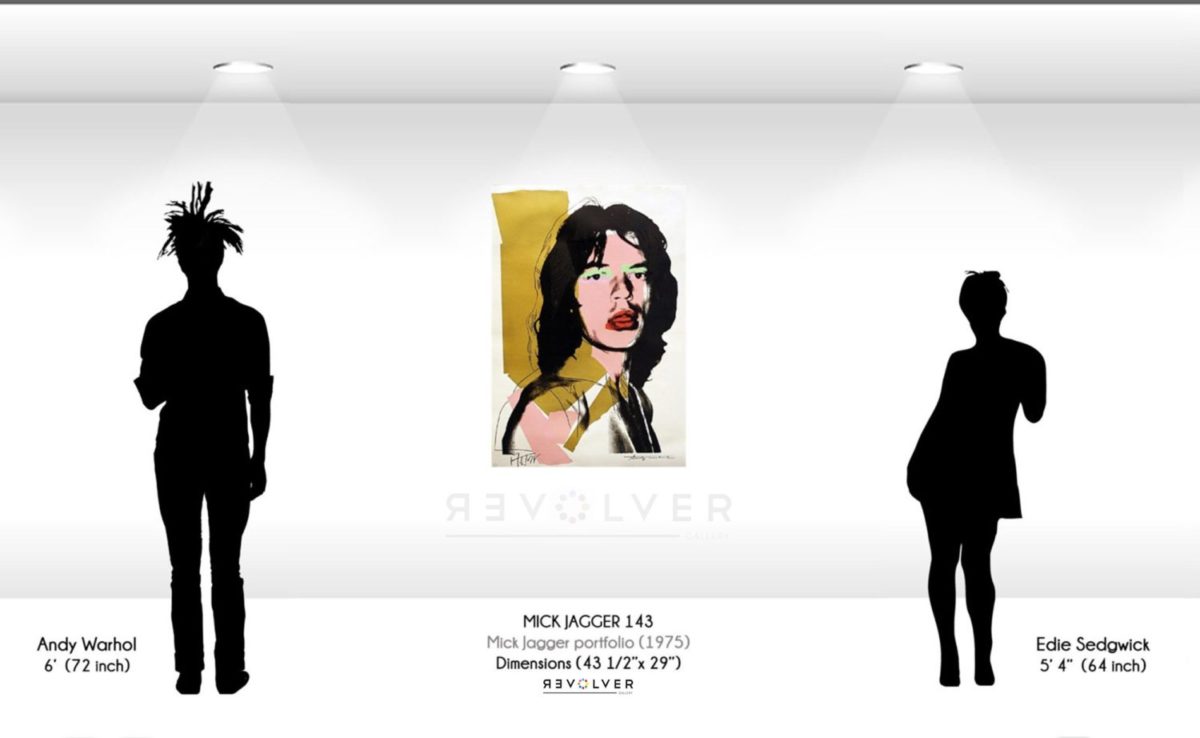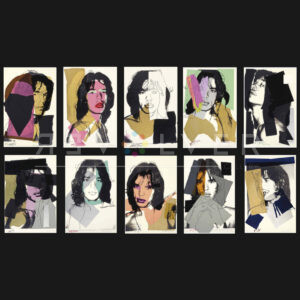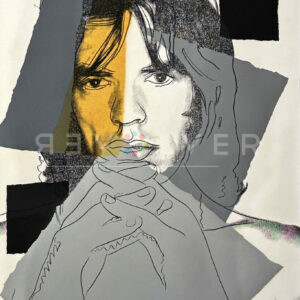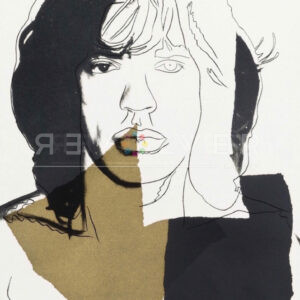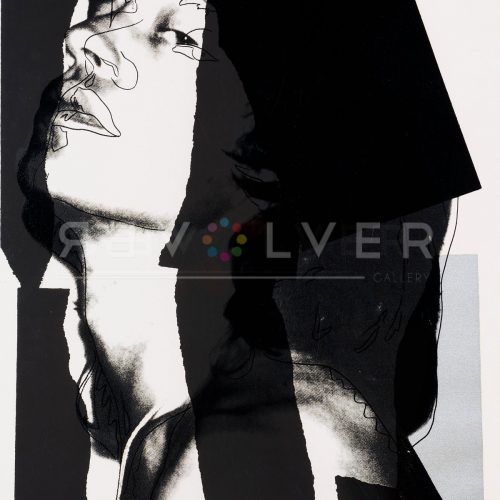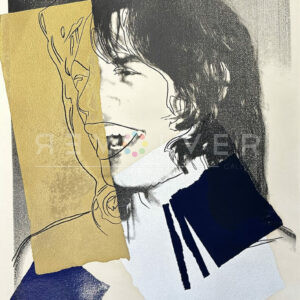Mick Jagger 143 is a screenprint by Andy Warhol in his signature collage style, from the Mick Jagger portfolio. The piece is a testament to Warhol’s study of celebrity. The collection displays Jagger through a lens of varied angles and facial expressions, while Warhol’s use of color serves to amplify the rockstar’s most alluring qualities. Like the others in the series, Mick Jagger 143 includes both Warhol’s signature in pencil and Jagger’s in felt pen.
Andy Warhol and Mick Jagger met at a party in the early 1960’s. The Rolling Stones were flying high on their first U.S. tour at the time. From their first meeting, Warhol was surely enamored by Jagger’s rock and roll persona and his sex symbol status. He would later say of Jagger, “He’s androgynous enough for almost anyone.” Both being social creatures with a love of nightlife, the two would spend a lot of time together over the years. This led to their collaboration in 1971, when Jagger asked Warhol to work on the album cover for Sticky Fingers. The cover went on to become one of the most famous and subversive in rock and roll history. Featuring a close-up shot of a zipper and tight-fitting pair of jeans, its phallic imagery exhibited Warhol’s fascination with the band’s hypersexual image.
Four years later, Mick Jagger and his wife Bianca stayed at Warhol’s home in Montauk. Here the band would rehearse for their upcoming Tour of the Americas. The Stones had reached the zenith of their popularity in the U.S. and Warhol used the opportunity to take several semi-nude Polaroid shots of Jagger. Soon afterward, he created screen prints from these and intermixed them with line drawings and blocks of color. This combination of elements represents Warhol’s distinctive technique.
This was not Warhol’s first foray into rock and roll. In 1963 he completed his Triple Elvis, a dedication to Elvis Presley’s domination of pop music and the silver screen. The Mick Jagger series, then, represents a transformation of sorts. Here Warhol illustrates that the face of rock and roll has shifted to become multifaceted, more overtly sexual and even genderless.
Each part of Mick Jagger 143 has sure purpose: the focal point of the image is the color red to emphasize Mick Jagger’s legendary lips, whereas the pastel green above the eyes adds a surprising shade of innocence to Jagger’s bad boy personality. Meanwhile, Warhol’s placement of the line drawings implies a sense of movement. This alludes to Mick Jagger’s feverish dance moves onstage. In this piece his open-mouthed, candid expression contrasts the other 9 works, which feature looks of contemplation, rebelliousness and laughter.
In this series Warhol clutches the zeitgeist of the 1970’s counterculture. He saw Mick Jagger as both an exciting and complicated figure of his time who held the spotlight with an untamed gaze. Ever since his captivation with Elvis, Warhol had kept an eye on the power of rock stardom. Mick Jagger 143 proceeds one step further and seizes upon the raw spirit of American pop culture. Through Mick Jagger, Warhol captures its shades of light and dark, its highs and lows and its erotic beauty.

